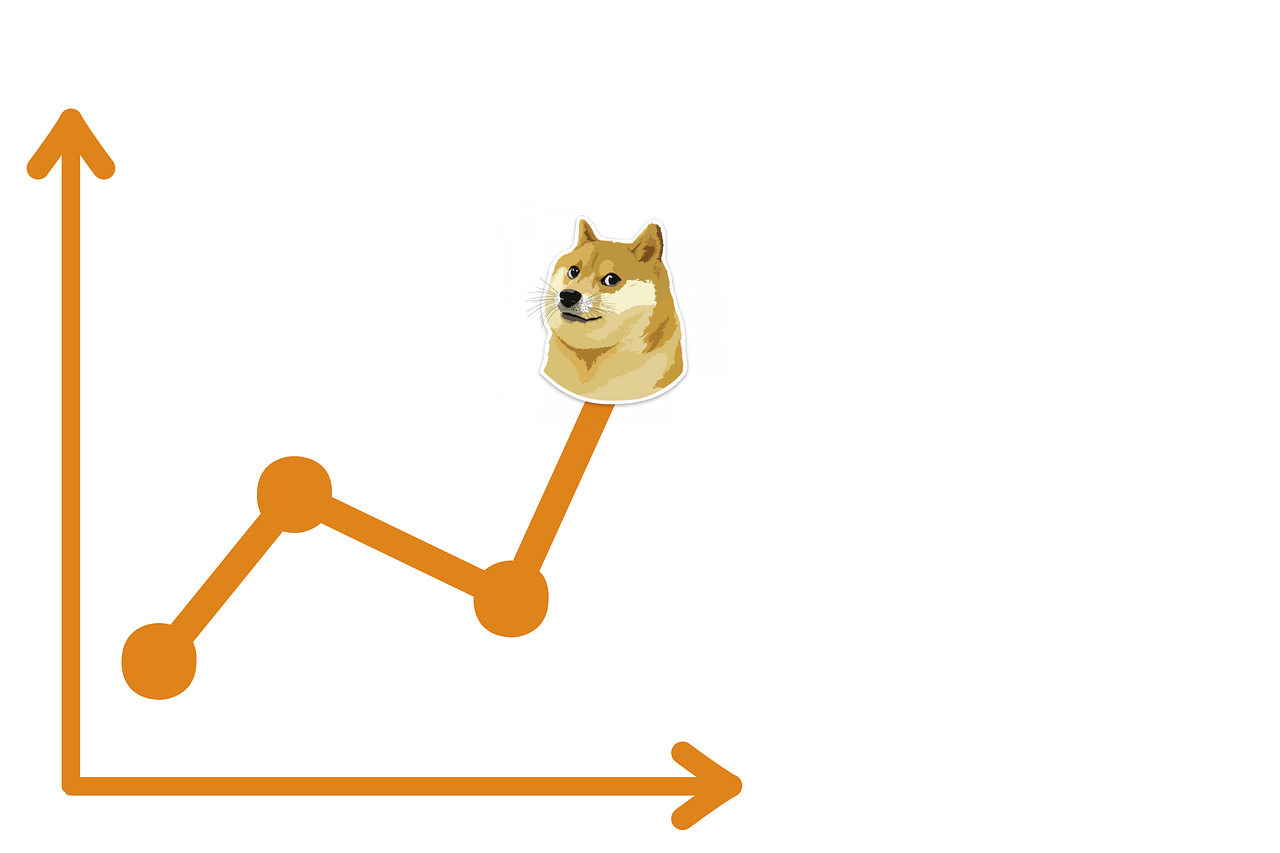Why Do Price Trends Skyrocket Then Fall? Here's the Explanation
3 comments

An example of a variety that is highly valued and sought after by many people is the monstera deliciosa variegata. This variety has perforated leaves and a combination of green and white, or green and yellow on its leaves. On the other hand, there are also several varieties of Swiss cheese plants that are quite affordable. For example, monstera adansonii, which is priced at 15-50 thousand.
Well, if you browse videos on YouTube, there are lots of videos of sellers, collectors, and also celebrities who show off this plant while mentioning its fantastic price. Some say the price is 80 million rupiah, 100 million rupiah, and some even go up to hundreds of millions of rupiah.
Wow, how can the price be that expensive? Imagine, one of these plants costs the same as a car, even the price is the same as an apartment or a simple house in the suburbs.

Usually when we hear such exorbitant prices, we start to imagine, if only we had that plant a long time ago, maybe we could suddenly become rich.
Eiittsss....wait a minute, it feels like there is deja vu with a similar phenomenon a few years ago. The high price of the janda bolong plant is very similar to the agate fever in 2014, which cost billions of rupiah. It is also similar to the flowerhorn fish which was suddenly hunted by many ornamental fish collectors in the early 2000s. There was also the excitement of the love wave plant, or Anthurium plowmanii in 2007, and many more. For those of you who may still remember, in 2014, until mid-2015, there were many news reports, talk shows, or infotainment that reported on gemstones, whose prices soared to hundreds of millions, even billions of rupiah. Celebrities, officials, and gemstone collectors also did not miss out on showing off their gemstone collections which were of fantastic value and made many people jealous.

Suddenly, many people around us suddenly wore gemstones on their fingers, even though they never wore gemstones before. But after Eid 2015 ended, many enthusiasts of gemstones dropped drastically, and automatically caused the price of gemstones to skyrocket, and then returned to normal again. Traders were surprised, collectors were also confused, suddenly the gemstone fever just disappeared. This phenomenon is captured in the Google Trends application, which reflects the rise and fall of keyword search volumes on Google. If we check the word gemstone, the results are quiet from the news, not as noisy as before. How can a trend for a product go up and down drastically and be loved by many people? But after some time, the trend suddenly disappears, and often causes losses for traders and collectors who have already invested in the commodity.
What actually causes this price increase phenomenon, from gemstones, flowerhorn fish, love bubbles, and others?
Why can a trend suddenly appear and disappear just like that? Let's discuss it.
First, I'll ask, how can a price be formed? What are the components that form a price that can go up and down? A price is always formed from two components, namely the level of demand and the level of availability of goods. If the demand for an item is high, while the availability of goods remains the same, or is limited, rare, or small, then the price of the item will continue to rise. And if the demand for an item is low, while the availability of goods is abundant, the price tends to fall and be cheap. Because its economic value is low. That is the basic principle of price formation in economics. Prices that rise and fall are always related to the level of demand and availability of goods. The principle is indeed simple, but we need to explore further about these two components, especially the level of demand. Now try to think, what makes the demand for an item go up and down. First, because of its high functional side, whether the item can be a consumer item, a basic production material, or something useful and beneficial for us. The higher the functional value, the higher the demand for the item, along with the increasing number of people. Second, because of the widespread public perception in appreciating the item. It could be because the item is very difficult to make. The manufacturing process takes a long time. It could also be because it has historical value, or its own beauty and is finally widely appreciated. The greater the public's appreciation for the item, the higher its economic value. The third, now this is the exciting one, and at the same time explains the phenomenon of price spikes, namely because of the formation of a fake price perception, which ultimately gives rise to price speculation from a group of people and makes the price seem to have skyrocketed. In fact, the item has no functional value or broad and universal public perception. The phenomenon of price increases triggered by this price speculation will not have a clear reason, why the price can increase. Every time someone asks "why is the price so expensive?"
Yes, the answer is just twisted into a perception of a made-up price, without being able to mention the reason from an economic perspective. This phenomenon has its own term in economics, economic bubble, or price bubble, which is a price increase triggered by speculation and finally drops sharply in a short time. An example of a case that is perhaps the most extreme of a price bubble, occurred 400 years ago. In Europe, there was a tulip fever. At that time, the price of beautiful tulips suddenly skyrocketed. Nobles, investors, and price speculators hunted for tulips with very diverse variations. One stalk of the rarest tulip at that time was valued at 10,000 guilders. Meanwhile, the wages of skilled workers in 1637 were 25 guilders per month, or around 300 guilders per year. That's crazy, right? Ironically, in just a few months, the price of tulips in Europe dropped sharply, and enthusiasts suddenly disappeared. This phenomenon of fluctuations in tulips made many people wonder, until finally a term called "monkey business" emerged. Monkey business is defined as a business activity or business that is not productive, not beneficial, and even tends to harm others.
I will try to explain this monkey business using a tragic analogy that is quite popular.
One day, there was a rich man who came to a village near the forest. One day, the rich man told the villagers that he was willing to buy 1 monkey for 50 thousand rupiah. The villagers became enthusiastic about hunting monkeys in the forest and selling the monkeys to the rich man. Because many were hunted, monkeys in the forest became rare. The rich man said again that he was willing to buy a monkey for 100 thousand rupiah. The news spread to neighboring villages, and finally more and more people hunted monkeys, caught them, and sold their monkeys at high prices. In fact, they even gave price variations for the size and color of the monkeys they caught. As time went on, the number of monkeys decreased, and they became increasingly rare. Finally, the rich boss talked again, that he was willing to buy the monkeys for 500 thousand rupiah. The boss also said goodbye for a while to go to the city, and handed over all the affairs in the village to his assistant. Not long after that, the rich boss's assistant told the villagers that he was willing to sell the monkeys he had for 350 thousand rupiah. The villagers flocked to buy up the monkeys, draining their savings in the hope of being able to sell the monkeys again to the rich boss, for 500 thousand rupiah. After that incident, the boss and his assistant never appeared again in the village. The villagers were confused about finding buyers for the monkeys. The price of the monkeys fell, until finally they realized that from the beginning the monkeys in the forest did not have any economic value to be traded. Meanwhile, the boss and his assistant ran away with a lot of money from the villagers, by forming a fake price perception, which caused price speculation in the market.
That is the analogy of monkey business.
Actually, this monkey business is just a popular illustration that could happen, but could also not happen.
Actually, economic bubble, or price bubble can be triggered by a group of people who play with artificial price speculation, but it can also be triggered organically. Well, that's a little explanation from me about price speculation. Economic bubble, or price bubble, and also an illustration of monkey business. Hopefully this explanation can be useful for you.
Greetings always compact.
By @midiagam
Comments